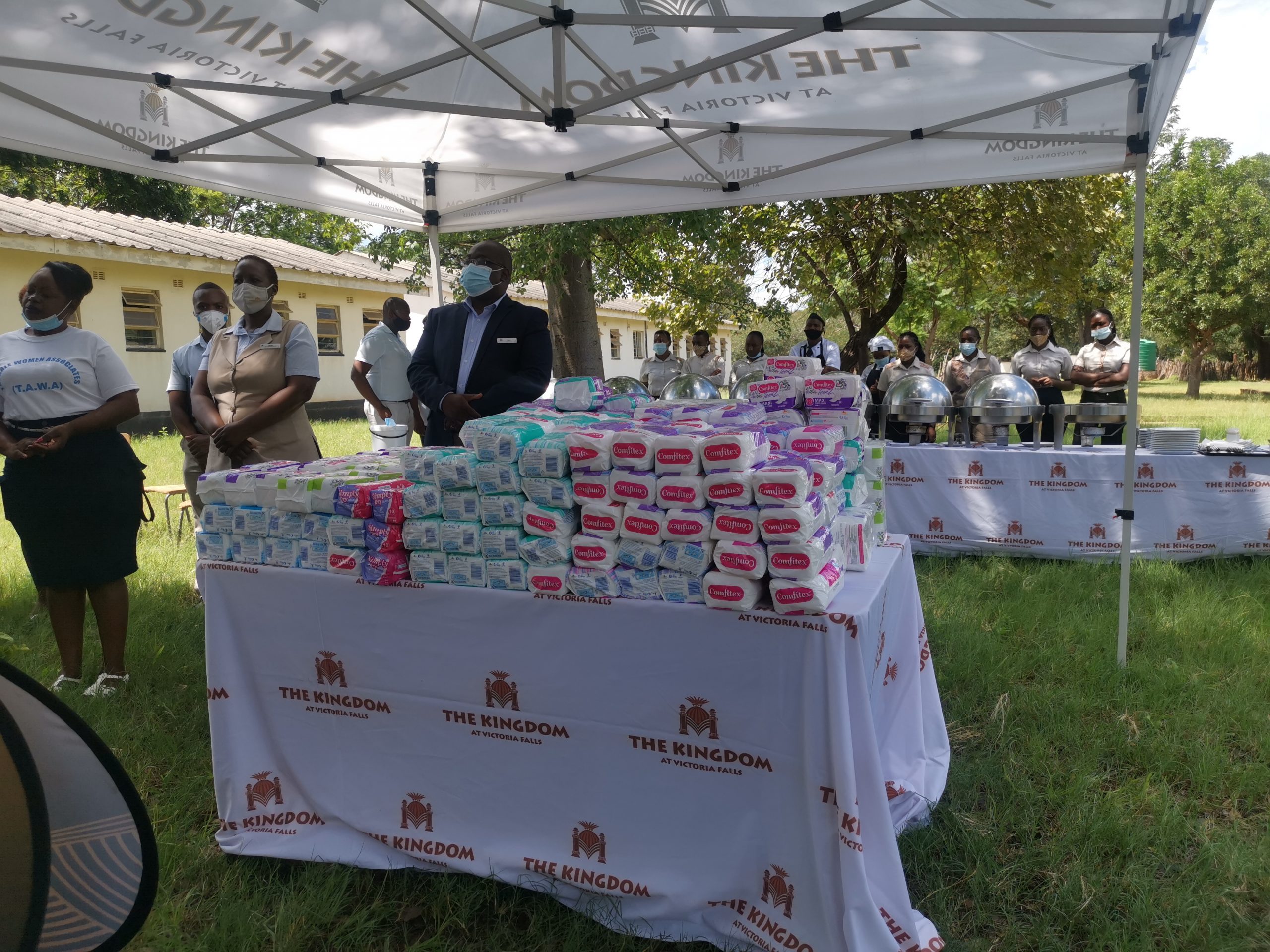BY NOKUTHABA DLAMINI
A leading hotel in Victoria Falls and a non-governmental organisation on Friday donated 326 packs of sanitary wear to girls at a school on the outskirts of the resort city.
The Kingdom Hotel and The Able Women’s Associates (TAWA) handed the donation to girls from Ndlovu Secondary School at a function held at the school.
Nkosinathi Moyo, The Kingdom Hotel general manager told pupils, teachers and community leaders, that the donation was part of its efforts to promote universal access to sexual and reproductive health-care services among girls from disadvantaged backgrounds.

The Kingdom Hotel staff handing over sanitary pads to girls at Ndlovu Secondary School on Friday
“Studies by different scholars have established that simply having a reliable supply of sanitary wear has had a positive impact on young girls’ self-esteem and school performance,” Moyo said.
“The partnership between Ndlovu Secondary School and The Kingdom which is in its infancy should see the girl child benefitting through access to sanitary wear.”
TAWA’s co-founder Judith Muteve said in their research they established that some school children were skipping r lessons due to lack of sanitary wear and fear of victimisation in the event of soiling their uniforms.
“We are aware of your passion to be always at school, but at times you end up failing to attend your lessons due to lacks of pads,” Muteve said.
“Menstruation is not something that should embarrass you.
“So we want you to focus on your school work so that you perform well, and you should as a girl child declare every day when you wake up that you are fearfully and wonderfully made.
“You must declare that you are a professional in the making. So our goal is to ensure that we usher you into that through provision of such among other programmes because we have established that many of you are dropping out of school to seek marriage due to poverty.”
Random sampling among pupils at the school revealed that they either used maize cobs, old clothes and newspapers or tissue paper during their monthly periods.

Ndlovu Secondary School in Victoria Falls
According to the school’s acting headmaster Mbonisi Mzingwane, most of the children at the school are males and the main drivers of that is due to lack of adequate necessities such as sanitary wear for female students.
“The school’s enrollment is approximately 370, but we have very few girls,” Mzingwane said.
“For instance, our form two students have over 50 boys and girls only cover half of that figure and this is because of lack of sanitary wear and poverty, which in the end lead them to either opt or dropping out of school for marriage.”
According to the local councillor Given Moyo, some pupils have also performed badly in their studies due to lack of sanitary wear.
“Whenever they soil their uniforms and chairs other students shun them, especially the boys and that child will be laughed at and mocked by her classmates until they opt not to come to school,” the councillor said.
“So it is important for parents and teachers and other community members to take lead in this matter among other cultural practices that disadvantage a girl child to an extent that they have to drop out of school.”

 Slider3 years ago
Slider3 years ago
 National4 years ago
National4 years ago
 Tourism and Environment4 years ago
Tourism and Environment4 years ago
 Opinion4 years ago
Opinion4 years ago
 Special reports4 years ago
Special reports4 years ago
 National4 years ago
National4 years ago
 National3 years ago
National3 years ago
 National3 years ago
National3 years ago















